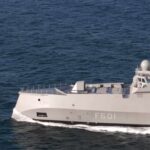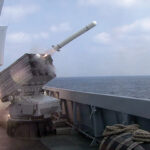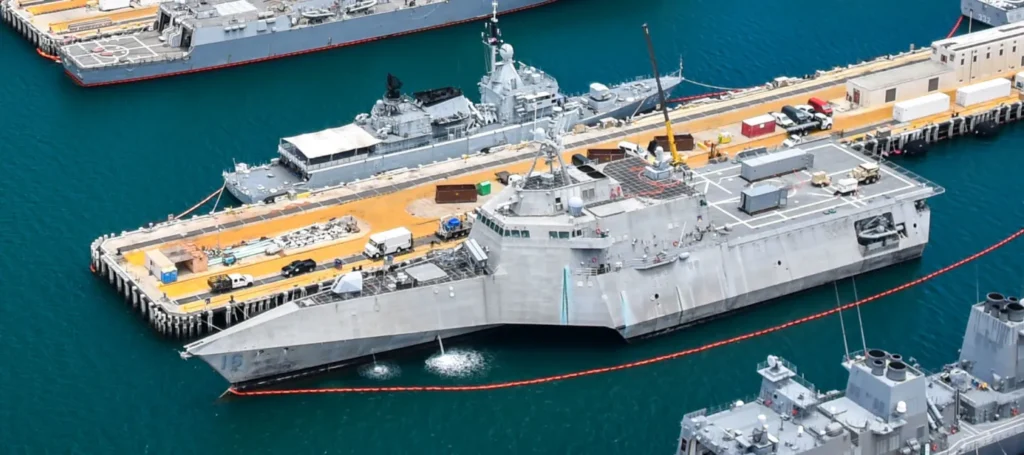
HISTORY
In the early 2000s and after the Al Qaeda attack (9/11), the U.S. Navy decided to proceed with the design and construction of a new ship class in order both to replace the Oliver Hazard Perry frigates, which were taken out of active service in the following decade, and to deal with the new threat that the U.S. armed forces would have to face. terrorism and organized crime.
The first two ships of the two sub-classes, USS Freedom and USS Independence, began construction in 2005 and 2006 respectively and entered service in 2008 and 2010.
The U.S. Navy at the time had requested 32 ships, for the ceiling of 355 ships that had been decided, rather than the 35 that were finally decided.
PROBLEMS
FREEDOM-CLASS
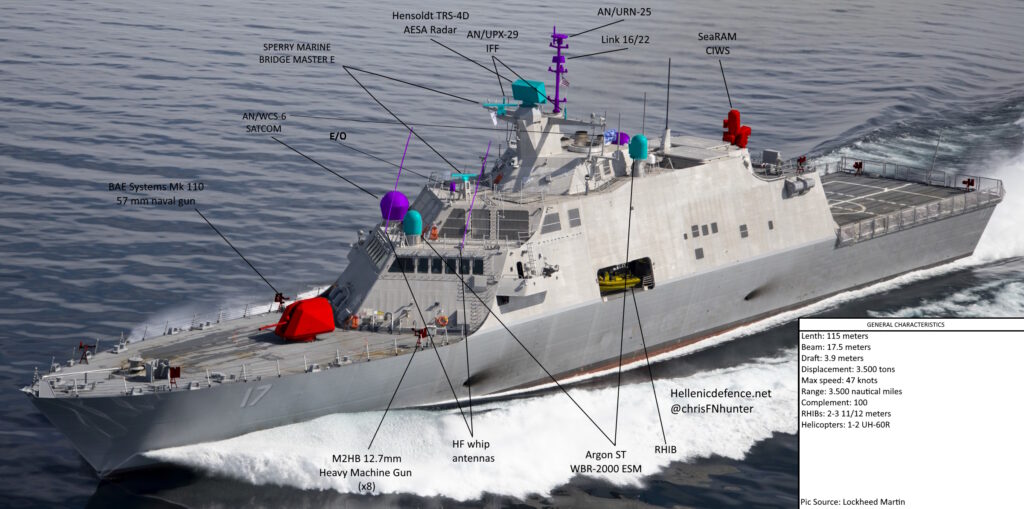
Since the beginning of the active service of the Freedom class, several problems have been identified in the boats of the class, the most important being that of the gearbox. This problem is detected during the development of high speeds from the boat, over 30 knots, and leads to the “eating” of the gears of the gear, resulting in pieces of metal falling inside and contaminating the engine oil. This results in the total loss of energy from the ship and as we have seen many times ships of the class stay in the middle of the sea or, if it is lucky, the crew can sail at a lower speed. However, this problem seems to have been solved, at least in the 5 newer ships of the class with a change of gearbox.
Another serious problem is the combat modules that the ship was supposed to be able to easily change to a naval base in a matter of hours. The first problem is that the module with the AN/SQR-20 variable depth sonar failed to reach the expectations of the Navy and so it was canceled leaving both classes without sonar, maybe in the future we will see some Captas from Thales, since the Captas-4 will equip the future U.S. Constellation frigates.
The module with the Hellfire missiles, although it has been successfully tested by two ships of the class, seems to have been removed immediately afterwards and for the time being there is no plan to install this module. There also does not seem to be any plan to place surface missiles (Harpoon/NSM) on the ships of the class leaving them without any real attack through attack beyond the main 57mm gun.
The first ships of the class, apart from the rest of the problems, seem to have had some structural issues which were solved in the next ships of the class, which apparently saw a slight lengthening.
There seem to have been minor issues with the operation of the TRS-3 radar that led to its replacement by TRS-4 on class ships from LCS 17 onwards. Finally, there was a problem in the operation of the ship with such a small crew, which initially numbered about 50 officers and sailors, and so it was decided that there would be only one crew of 100 men and not a basic one that would sometimes be supplemented by other crews responsible for any modules the ship would receive.
INDEPENDENCE

The Independence class has significantly fewer problems than the Freedom class, but no less important.
The main problem faced by ships of this class was cracks in the hull which were created while sailing at speeds of more than 15 knots. This problem has been solved by changing the metal in the places where cracks appeared with thicker materials.
In the first ships of the class, cases of advanced erosion appeared, which, like the previous problem, was solved.
Finally, the Independence class faces the same problems as the Combat Modules, as they will not be changed in this class either. Although the Surface Combat Module (Hellfire) has also been tested by a ship of this class, it seems that, as in the Freedom, it was removed immediately after and their fate is ignored.
SUB-CLASSES
Ships of the two classes often appear with different armaments. Specifically, based on the weaponry, 2 sub-classes appear in the Freedom class and 4 in the Independence class. The writer takes the initiative to name the sub-classes for the sake of convenience in the future.
FREEDOM
BATCH 1
Ships belonging to the Batch 1 subclass carry the following set of weapons:
-1xMk-110 BAE 57mm
-2xMk-44 Bushmaster 2 30mm
-1xMk-49 RAM
Ships of sub-class BATCH 1:
-USS FORT WORTH (LCS-3)
-USS MILWAUKEE (LCS-5)
-USS DETROIT (LCS-7)
-USS LITTLE ROCK (LCS-9)
-USS SIOUX CITY (LCS-11)
-USS WICHITA (LCS-13)
-USS BILLINGS (LCS-15)
BATCH 2
Ships belonging to the Batch 2 sub-class are equipped with the following set of weapons:
-1xMk-110 BAE 57mm
-1xSeaRAM
Ships of sub-class BATCH 2:
-USS INDIANAPOLIS (LCS-17)
-USS ST. LOUIS (LCS-19)
-USS MINNEAAPOLIS ST. PAUL (LCS-21)
-USS COOPERSTONE (LCS-23)
-USS MARINETTE (LCS-25)
INDEPENDENCE
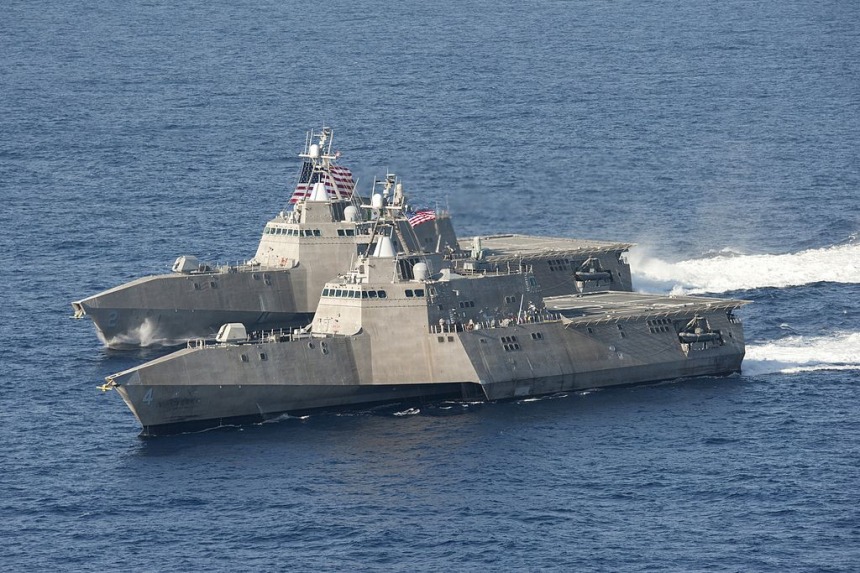
Here, due to the four different sets of weaponry carried by the ships of the Independence class, the categorization will be done in a different way.
LIGHT –
Ships belonging to the Light subclass have the following set of weapons:
-1xMk-110 BAE 57mm
-1xSeaRAM
Ships of sub-class Light-:
-USS MANCHESTER (LCS-14)
-USS TULSA (LCS-16)
-USS CINCINNATI (LCS-20)
-USS KANSAS CITY (LCS-22)
-USS MOBILE (LCS-26)
-USS SAVANNAH (LCS-28)
-USS SANTA BARBARA (LCS-32)
LIGHT
Ships belonging to the Light sub-class are equipped with the following set of weapons:
-1xMk-110 BAE 57mm
-1xSeaRAM
-2xMk-44 Bushmaster 2 30mm
Ships of the Light sub-class:
-USS MONTGOMERY (LCS-8)
-USS OMAHA (LCS-12)
-USS CHARLESTON (LCS-18)
LIGHT +
Ships belonging to the Light+ sub-class are equipped with the following set of weapons:
-1xMk-110 BAE 57mm
-1xSeaRAM
-8xNSM
Light+ sub-class ships:
-USS OAKLAND (LCS-24)
FULL
Ships belonging to the Full sub-class are equipped with the following set of weapons:
-1xMk-110 BAE 57mm
-2xMk-44 Bushmaster 2 30mm
-1xSeaRAM
-8xNSM
Ships of Sub-class Full:
-USS JACKSON (LCS-6)
-USS GABRIELLE GIFFORDS (LCS-10)
ADVANTAGES
Despite the significant problems presented by the two LCS classes, there are also obvious advantages in the existence of such vessels in the U.S. Navy. Clearly, the Freedom and Independence classes do not have the firepower of a destroyer, nor do they have the firepower of a frigate (although they were created to replace frigates), but they offer cheaper use than the USN destroyers and are ships that will be able to undertake operations such as patrols, instead of piracy and anti-cartel operations in Central and South America. That is, compared to the destroyers AB and Ticonderoga, they are cheaper to use.
BY THE SEA
The class’s most significant development at sea was the USS Sioux City’s (LCS-11) mission to Europe and the Middle East in 2022. As it seems, Sioux City managed to carry out its mission even without the replacement of the gearbox, while the maximum speed it managed to develop during its mission was a little more than 30 knots. The USS Sioux City managed to cover 28,000 nautical miles and join the U.S. 5th and 6th Fleets during its voyages in the Atlantic, the Baltic, the Mediterranean, and the Gulf.
Other Freedom-class ships, such as the USS Freedom and USS Little Rock, were deployed to South America, specifically in the 4th Fleet, in anti-drug cartel missions as part of strengthening the alliance between the U.S. and South and Central American countries. A total of 7 Freedom-class ships joined the 4th Fleet for a period of time on anti-drug missions.
The Independence-class ships have been deployed in the Pacific and Indian Oceans. Several of these ships made historic missions for the USN as they managed to restore the American presence in South East Asia by visiting, and using as a base, ports in Singapore, Indonesia and the Philippines. The U.S. effort to restore its presence in South East Asia in this way was greatly aided by the small size of the Independence (compared to the USN’s destroyers) and their waterjets, which gave them the ability to enter smaller ports and be able to sail in them without the help of tugboats.
Independence-class ships have also taken part in the international exercise RIMPAC in the Pacific Ocean.
MISSION
The LCS program for the U.S. Navy seems at first glance to be a failure, as the modules created more problems than they solved, resulting in their removal, for the most part. But as we said earlier, the ships of the two classes also give some advantages to the fleet.
The Freedom-class ships, based in Mayport, Florida, will be deployed in Central and South America, Europe and the Gulf. There these ships will undertake anti-drug and escort missions. Ships of this class are not expected to take part in a war episode as they are under-equipped and their armor could not withstand a blow because they are not designed as front-line ships but as ships in missions against drugs, terrorist organizations and countries that do not pose a threat. We didn’t add that to the problems as that’s how it was designed and it’s not something that was created during or after construction.
The Independence-class ships, on the other hand, appear to take on the role of corvettes and can take part in combat operations alongside the larger destroyers of the USN, while they will also be able to act alone in groups in less hostile areas. The Independence-class ships will also receive the Mine Counter Measure module, the AQS-26 and will also be able to act as minesweepers. The latter is also the reason why the USN is considering deploying four ships of the class in the Gulf before replacing other older ones there, which seems to greatly weaken the Independence’s power in the Pacific.
The ships of the class, based in San Diego, California, appear to be operating as a rule in the Pacific Ocean, where the U.S. and the USN have identified China as the number one threat.
DECOMMISIONING
After the many and important problems that arose with the 2 LCS classes, the USN was forced to put 3 ships, 1 Freedom and 2 Independence, out of service. In addition to the problems that exist, the USN considers the maintenance costs of the LCS to be exorbitant, and Admiral Gilday has requested from Congress the withdrawal of 10 of the total Freedom-class ships, arguing that with the money that will cost to maintain the ships, which will reach about $60 billion by the end of their life, the USN will be able to acquire many more missiles for its destroyers.
Apparently, the only reason why all 10 Freedom ships will not be withdrawn is political, not operational. Subcontractors who have undertaken the maintenance of the Freedom ships in Florida seem to have contacts in Washington and due to Biden’s policy of increasing jobs, the withdrawal of the ships is prohibitive. These jobs seem to reach 2,000, i.e. 2,000 families who will be left poorer if Freedom-class ships are withdrawn en masse.
